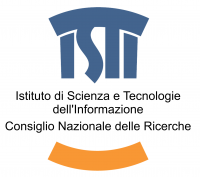Karsten Lambers, Hans Kamermans
This session builds on a successful session on the same topic at the 3rd Joint Chapter Meeting of CAA Germany and CAA Netherlands/Flanders in October 2014 in Cologne, Germany.
Digital technologies, methods and data have profoundly changed the practice of archaeological research in recent years, as reflected by the wide range of topical sessions at CAA conferences. However, the topic of teaching has rarely been addressed. While archaeological teaching at the university level has seen many changes in recent years, these changes were mostly driven by educational reforms and trends, such as the Bologna Process, interactive teaching, inclusive teaching, continuing education etc. Leaving simple tools like Powerpoint aside, digital technologies, on the other hand, seem to have had little impact on archaeological teaching. The challenge seems to be a twofold one, regarding both content and style, as reflected in the title of this session.
Teaching digital archaeology: While digital archaeology is firmly rooted in archaeological curricula at many universities, especially those with big archaeology departments, it is still not an integral part of the teaching programmes at many smaller institutions. There, if offered at all, it often competes with other optional subdisciplines such as bioarchaeology or geoarchaeology. This deficiency is in sharp contrast with current demands on the archaeological labour market, where a wide range of computer applications to archaeology are today usually regarded as basic skills. How can we overcome this gap and better anchor digital archaeology in standard archaeology programmes, preferably at the undergraduate level?
Digitally teaching archaeology: At many universities, archaeology continues to be taught in traditional class formats such as lectures, seminars and field or lab courses. Novel formats such as e-learning, distance learning or MOOCs (Massive Open Online Course) that usually rely on digital technologies to present and discuss contents are until now rarely developed in the framework of, or for, archaeology programmes. What are the pros and cons of these formats, and how can archaeological teaching benefit from them?
This session invites contributions on the current practice of archaeological teaching in the digital age that address the question to which degree can, have, or should digital technologies become the subject and/or the means of archaeological teaching. While the main focus is on teaching at the university level, contributions on teaching other audiences (e.g., pupils, professionals, laypersons) or in other contexts (e.g., schools, museums, in the field) are also welcome.


